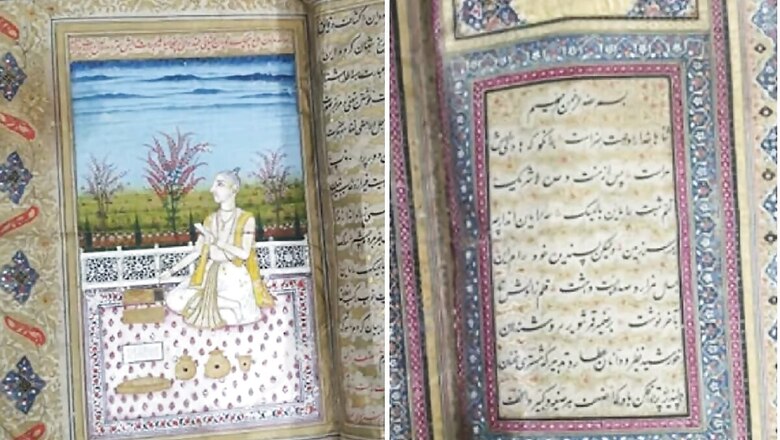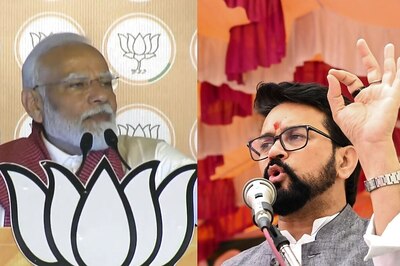
views
While mythology may have supernatural events and beings, an epic narrates events and occurrences that are part of the history. It can be a long narrative poem or drama in elevated style recounting the deeds of a legendary or historical hero.
Ramayana is such an epic that depicts the life story of Lord Rama, the seventh incarnation and the avatar of the Supreme Protector Lord Vishnu, symbol of courtesy and virtue, who held high moral values and has always been most revered among the Hindu deities. Rama has been widely accepted to be an ideal King of ancient India, who had taken birth on the earth to destroy the evil forces.
Dismissing the contention that Ramayana is only a literary piece, Ralph T.H. Griffith who had translated Valmiki’s Ramayana (The Ramayana of Válmíki, 1895) asks, " How could an Epic so dear in India to the memory of the people, so deeply rooted for many centuries in the minds of all, so propagated and diffused through all the dialects and languages of those regions, which had become the source of many dramas, which are still represented in India, which is itself represented with such magnificence year after year and to such crowds of people in the neighborhood of Ayodhya, a poem which at its very birth was welcomed with such fervour as the legend relates, that the recitation of it by the first wandering rhapsodists, has consecrated and made famous all the places visited by them, and where Rama made a longer or shorter stay, how I ask, could such an Epic have been purely allegorical?".
Such was the beauty of the literary excellence and the high and divine virtues of Lord Ram’s that Ramayana crossed boundaries and has been so regarded as their own by several countries of the world.
Outside India
Ramayana was rendered in Chinese in AD 251 by K’ang-seng-hui in the Jataka form and, in AD 472, another Chinese translation was prepared of the Nidana of Dashratha Jataka from a lost Sanskrit text by Kekaya.
In Sri Lanka, it was the sixth century Sinhala poet-king Kumaradasa who composed the Janakiharana, the earliest Sanskrit work of Ceylon. According to R Swastika, a research scholar in the Department of Sanskrit, Faculty of Arts, University of Jaffna - Ramayana contains seven Kandas .The Sundara Kanda and Yuddha Kanda describes the incidents that took place in Sri Lanka. The Ramayana is one such link that binds India and Sri Lanka geographically, historically, culturally and spiritually.
The connection between Sri Lanka and Ramayana are depicted through the illustrations relating to Hanuman’s search for Sita in Sri Lanka and the construction of Rama Bridge from Rameswaram by his forces. Further, evidence for this relationship can be noted from instance such as Asokavanam is located in Sri Lanka; the places Asokavanam, Sitaelliya, Ravana ella; where Sita is believed to have lived; Hanuman worshiped; and Vibishana’s coronation. Ramayana is a great epic and the first literature in Sanskrit literary tradition. It has impacted Sri Lankan literary tradition and could also be seen in the personal names Sri Lankans have.
Justin Henry’s paper, ‘Explorations in the Transmission of the Ramayana in Sri Lanka’, summarises scholarly perspectives on the significance of Ramayana in Sri Lanka, seeking to explain possible sources for the appearance of the epic’s dramatis personae (Rama, Ravana and Vibhishana) in late medieval Sinhala literature. He argues that Sri Lankan Tamils openly accepted the identification of the island with the Lanka of the Ramayana. Tamil Hindu kings of northern Sri Lanka became ‘guardians of the bridge’, the one connecting Rameswaram with the island of Mannar ,the bridge built by Rama and his monkey accomplices, connecting India to Ravana’s island fortress of Lanka.
In seventh century Cambodia, Khmer citation attested to the popularity of the Ramayana. An inscription declared that a certain Somasharman presented ‘the Ramayana, the Purana and the complete Bharata’ to a temple.
Vietnam also has a temple dedicated to Valmiki and a copy of Ramayana is also kept there. There are temples in Indonesia with sculpted Ramayana scenes on their walls. Thailand has Emerald Temple which has pictured the whole Ramayana story on 176 panels in glittering colours, which is an amazing attraction.
Towards the close of the ninth century, an east Iranian version of the Ramayana appeared in Khotanese, an Iranian dialect .The story of Rama spread in the northern most lands of Asia from Tibet where it was found in two versions in manuscripts of the seventh-ninth centuries. The oldest manuscript of the Ramayana of the Valmiki, dated AD 1075, is preserved in Nepal, says Jain.
“The Ramayana was translated and adapted into several European languages. During 1806-1810, the Baptist missionaries, William Carey and Joshua Marshman translated the first two books... In 1808 Friedrich Schlegel presented a partial translation in German. In 1829 his brother August Wilhelm Von Schlegel prepared an incomplete translation in Latin. The first complete translation was the five-volume rendition into Italian by Gaspare Gorresio, between 1847 and 1858. Almost at the same time came a nine-volume rendering in French by H. Fauche between 1847 and 1858; and a five-volume presentation in English by Ralph T.H Griffith between 1870 and 1874.”
“The Ramayana story occurred in three early Buddhist texts - the Dasharath Kathanam, the Anamakam Jatakam and the Dashrath Jataka. The Dasharath Kathanam, the earliest, belongs to the first-second century AD,” says Jain.
From the great 7th-century Ramayana stone pedestal in the Cham temple at Tra Kieu in Vietnam, to 20th-century performances of the Ceritera Seri Rama of Malay literature in the wayang Thailand shadow puppet theatre and 21st-century Indonesian comics, the Ramayana has not only retained its position as a literary classic in Southeast Asia but has been guide on virtues and high culture witnessed in actual situations. It did not get restricted to one class, caste, country or religion.



















Comments
0 comment